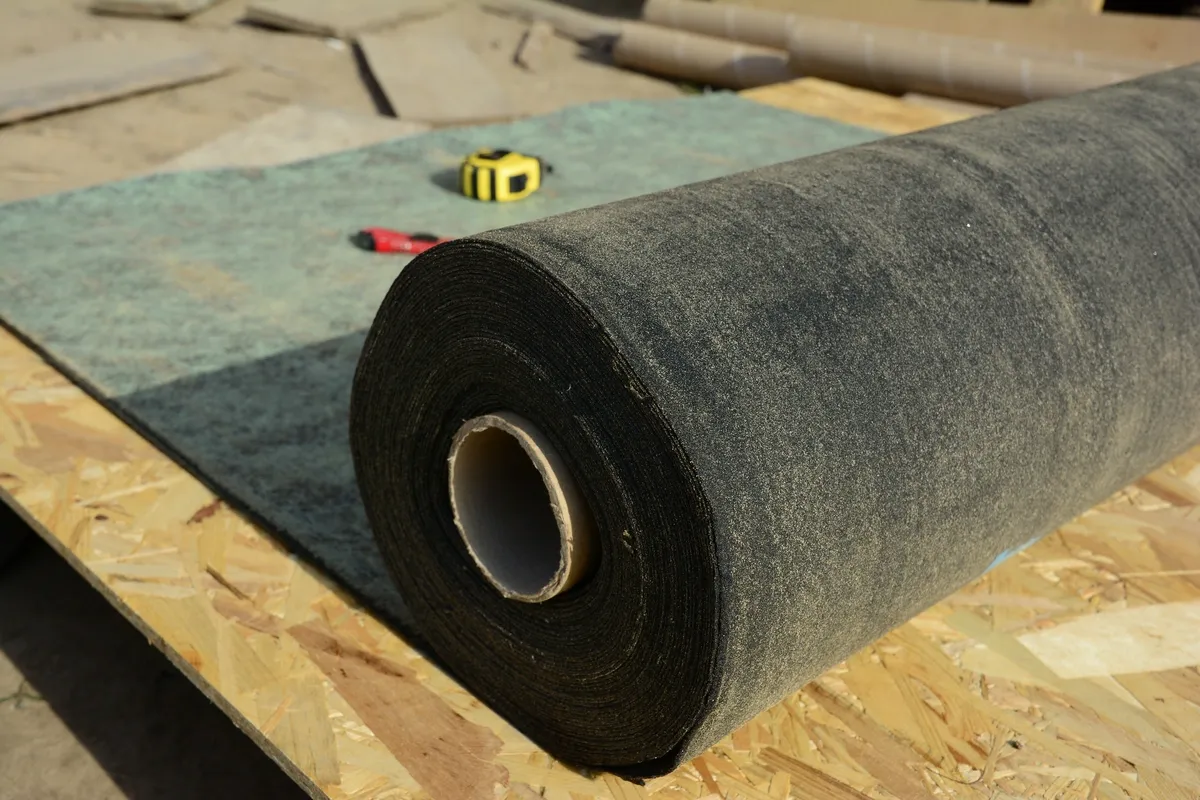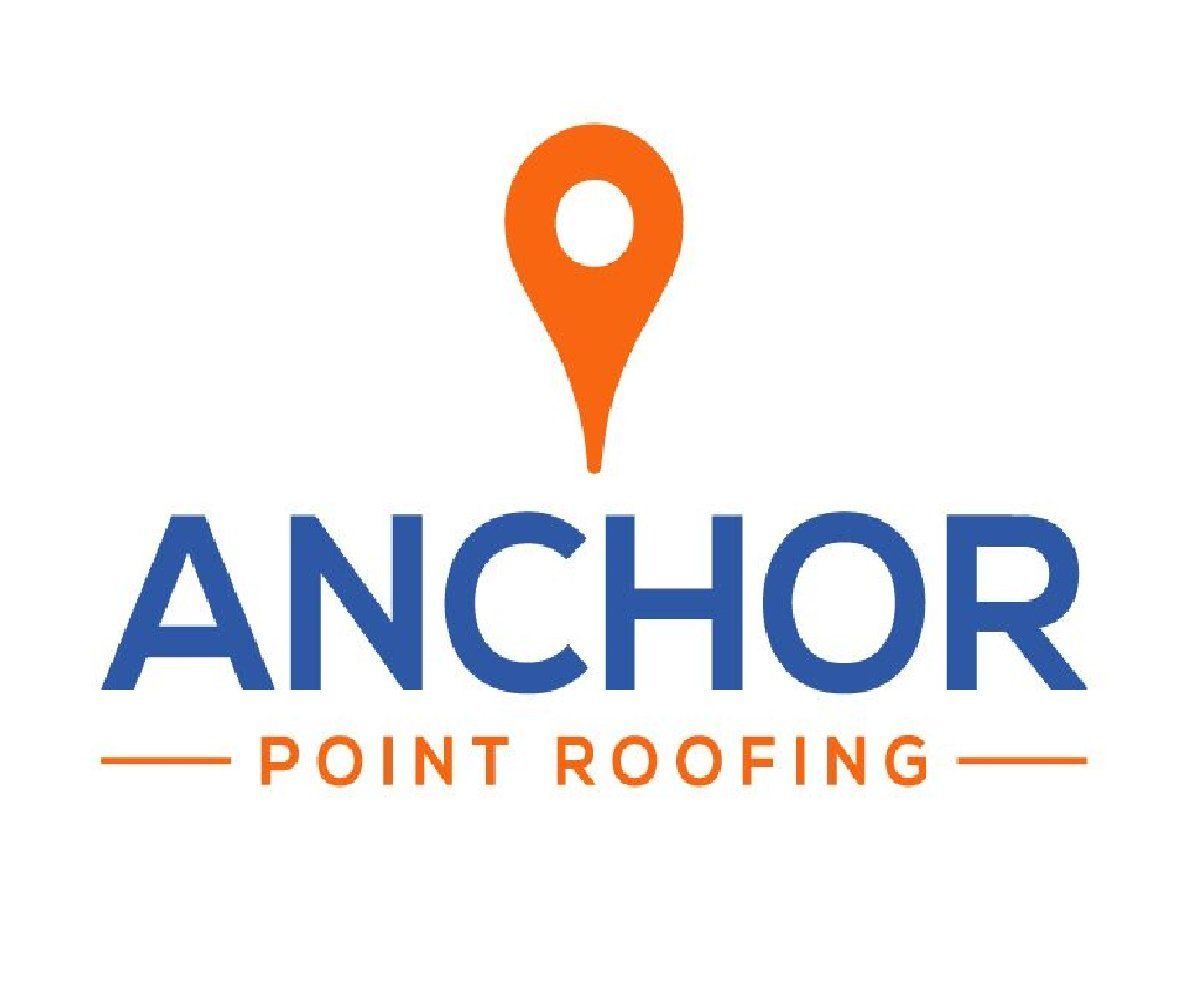About The Author
ANCHOR POINT ROOFING
Just like there are numerous roofing materials for pitched roofs, there are just as many options for flat or low-sloped roofs. When you’re in need of a new flat roof, you might consider some other flat roof materials other than what you’ve been used to.
Our guide will walk you through the best and most common types of flat roofing materials based on what the pros recommend. By the end, you’ll have a good idea of what might be your best bet!
WHAT IS A FLAT ROOF? WHAT MAKES IT DIFFERENT FROM A STANDARD ROOF?
A flat roof is a type of roofing system that has little to no pitch, making it almost completely level. Though there are a few different types of flat roofs, the two most common are built-up roofs (BURs) and single-ply membranes. Other than their low slope, flat roofs differ from standard roofs in a few ways:
- They’re more susceptible to pooling water, which can lead to leaks.
- They have a shorter lifespan than standard roofs.
- They require more maintenance than standard roofs.
- They are more frequently found on commercial buildings, but residential flat roofs are also common on more modern-designed homes, multi-residential units, or brownstones in urban areas (like Chicago ????)
THE BEST FLAT ROOF MATERIALS + THEIR PROS AND CONS
While the most commonly used flat roofs are BUR or EPDM, there are a few others to choose from that can be beneficial depending on your budget, climate, and level of upkeep.
1) BUILT UP ROOFING (BUR)
BUR or built-up roofs consist of layers applied to the substrate, which is usually asphalt and felts. To get a watertight roofing system, these layers are necessary, and regular flat roof maintenance prevents moisture build-up and other issues. With proper installation and maintenance, a BUR roof can last 20-30 years.
✅ PROS OF BUILT UP ROOFING
- One of the longest lasting flat roof materials (20-30+ years)
- Made of fire-resistant, non-combustible materials
- Durable against heavy snows, rains, and high winds
- Their multiple layers help prevent cracks, tears, and leaks
❌ CONS OF BUILT UP ROOFING
- On the higher end of cost, with an average cost per square foot of $7 but can reach $10 or more per sq. ft.
- It’s a heavy material that can put a strain on your structure
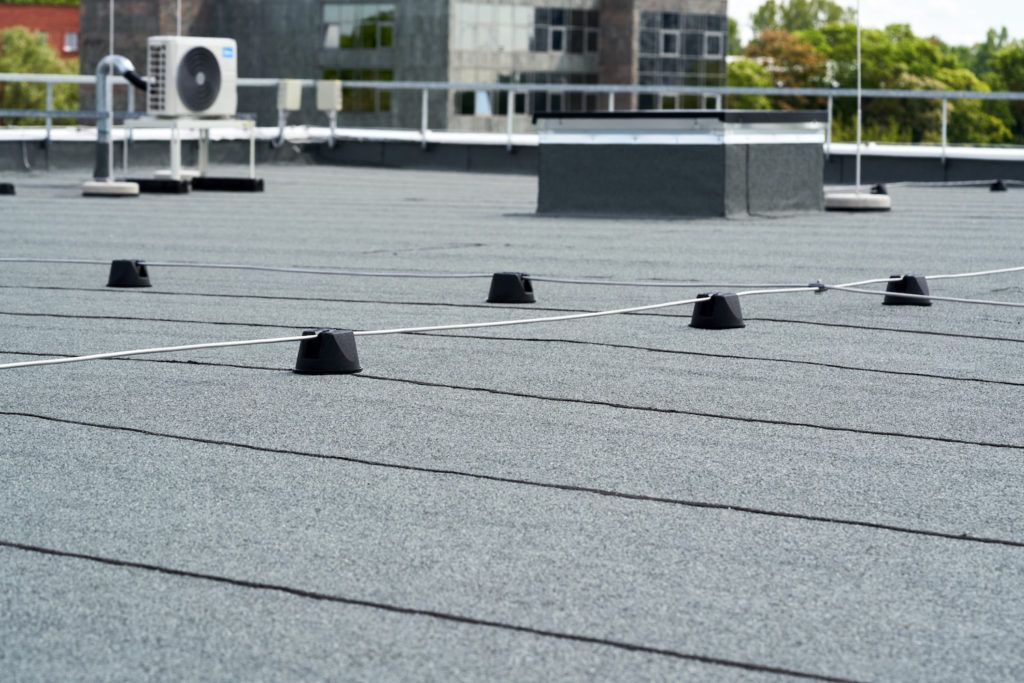
2) TPO (THERMOPLASTIC POLYOLEFIN)
A single-ply TPO roofing system is a newer material on the market that has only been around since the 1990’s but has been growing in popularity. It’s made of two main ingredients: ethylene propylene rubber and polypropylene (plastic). The two are then merged with heat and pressure to create a tough, weldable membrane that lasts anywhere from 10 to 25 years. At Anchor Point, we love to use both GAF and Johns Manville membranes for our TPO roofs.
✅ PROS OF TPO ROOFING
- It’s a light material, which helps save on installation costs
- Highly reflective, which can help lower energy bills in hotter climates
- Available in white or light colors to reflect sunlight and heat
- Durable against high winds, punctures, and tears
- Relatively easy to install
❌ CONS OF TPO ROOFING
- It’s a newer material, so its long-term effects aren’t as known
- May be more susceptible to cracking in colder climates
- This application allows for seams which can be susceptible to leaks
3) EPDM (ETHYLENE PROPYLENE DIENE TERPOLYMER)
Another popular option for flat roofs includes a rubber roof or EPDM (ethylene propylene diene terpolymer) roof. They’re great for both commercial and residential buildings and can last for around 20 years with proper installation and maintenance.
✅ PROS OF EPDM ROOFING
- Material is resistant to fire and can even slow down the progression of a fire
- Can last 20+ years
- Resistant to UV rays, water, ozone, and extreme temperatures
- Decreases energy costs
❌ CONS OF EPDM ROOFING
- Not as aesthetically pleasing as other materials
- Can be costly to install, with an average $8.50 per sq. ft. installed
- Susceptible to shrinking over time
- Requires consistent, regular maintenance
4) MODIFIED BITUMEN
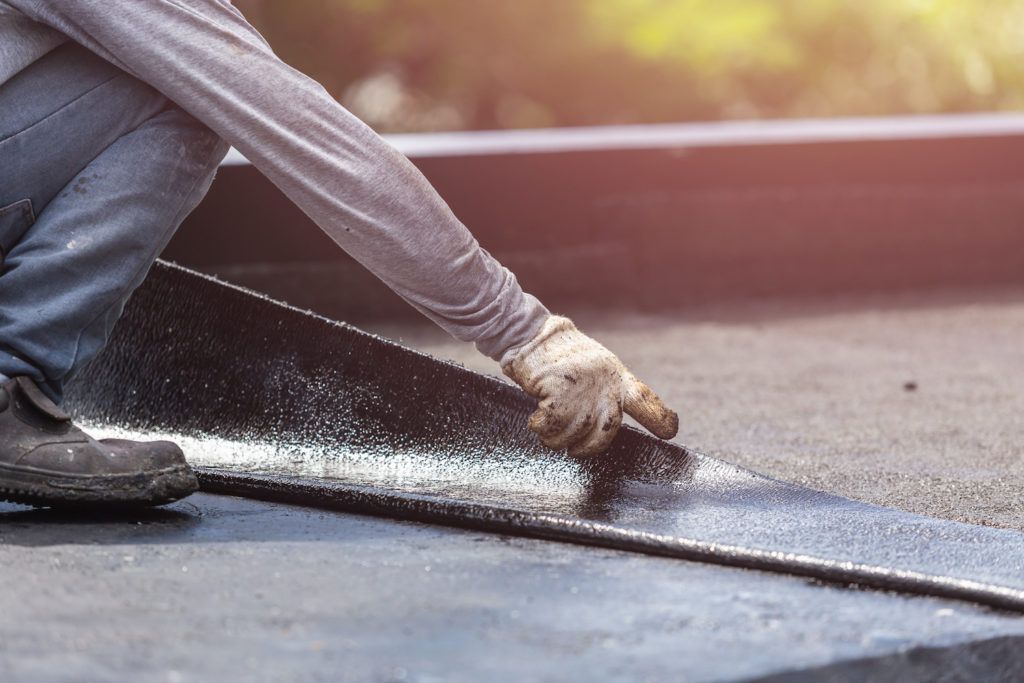
Modified Bitumen is a two-ply flat roof material that is applied using self-adhesive strips. This type of flat roof has a base sheet (we prefer the Liberty brand base sheets) and a cap sheet and can be heat or cold applied, which makes it very DIY-friendly.
✅ PROS OF MODIFIED BITUMEN
- Can be applied in cold weather
- Less expensive than some materials, with an average cost of $5 per sq. ft.
- Available in a wider variety of colors— ideal for residential flat roofs
- It’s easy to install, which makes it easier to find a contractor who can install it or you can even install it yourself
❌ CONS OF MODIFIED BITUMEN
- More susceptible to leaks and other damages
- Torch application can be a fire hazard— work with a professional
- Only lasts about 10-20 years
- Less durable against hail and large debris
5) PVC
PVC, otherwise known as polyvinyl chloride or plastic, is a great roofing solution for those who are looking for single-ply options. In comparison to TPO and EPDM roofs, it contains less oil and petroleum and offers a lot of substantial benefits to a flat roof.
✅ PROS OF PVC ROOFING
- Highly resistant to water, fire, chemicals, wind
- Lasts 20 or more years with proper maintenance
- Very durable— the heat-welded seams are stronger than the PVC material itself
- Reflects UV rays and mitigates heat islands making it highly eco-friendly
❌ CONS OF PVC ROOFING
- It can be costly
- Removal/replacement can be difficult
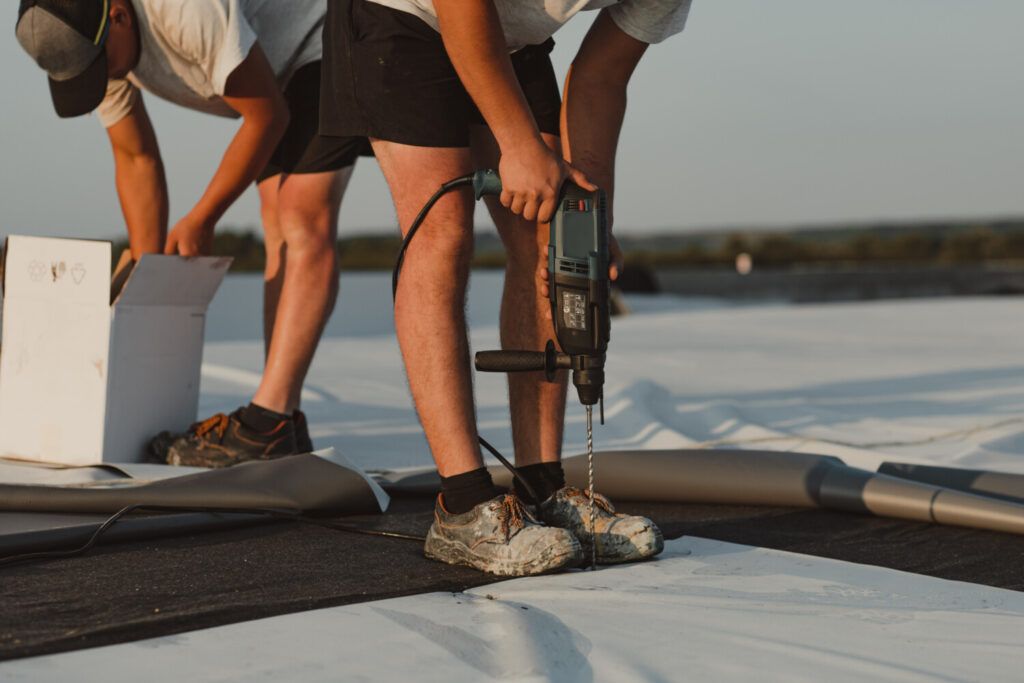
6) METAL
Metal roofs are an uncommon but possible roof material to use with flat roof applications. This is especially true for residential roofs with a flat or low slope portion that a homeowner wants to match the aesthetic of the rest of their home which can warrant the use of metal. If you’re looking for a roof that will last you a while, this type of roof is a great option.
✅ PROS OF METAL FLAT ROOFS
- Longest lifespan of all flat roof materials, lasting 40-70 years or more
- Can be recycled
- Not susceptible to the same wear and tear as other common roofing materials.
- Can withstand winds up to 140 mph
- Resistant to insects and rodent infestation/damage
- Quick and easy to install
❌ CONS OF METAL FLAT ROOFS
- On the expensive side for roofing materials
- Can expand and contract in temperature shifts
- Susceptible to corrosion
- Repairs can prove difficult
As you can see, there are so many different types of flat roof materials to choose from— it can be tough to choose the right one. That’s where a professional like Anchor Point can come in helpful.
GETTING THE BEST RESULTS FROM YOUR FLAT ROOF INSTALLATION
Choosing the right flat roof material for your home of business is a big decision, but at the end of the day it’s the installation that will matter most. Even the best materials on the market can be rendered useless if installed incorrectly. This is why it is crucial to do your research to find a qualified roofing contractor specialized in flat roofing. This will ensure your roof is set to protect your home or business for years to come.
If you’re interested in having a flat roof installed on your home or business, we highly recommend working with a professional team like Anchor Point Roofing. We have decades of experience in the roofing industry and specialize in installing and repairing all types of flat roofs. To get started, contact us right away!
Share this article :
RECENT ARTICLES

